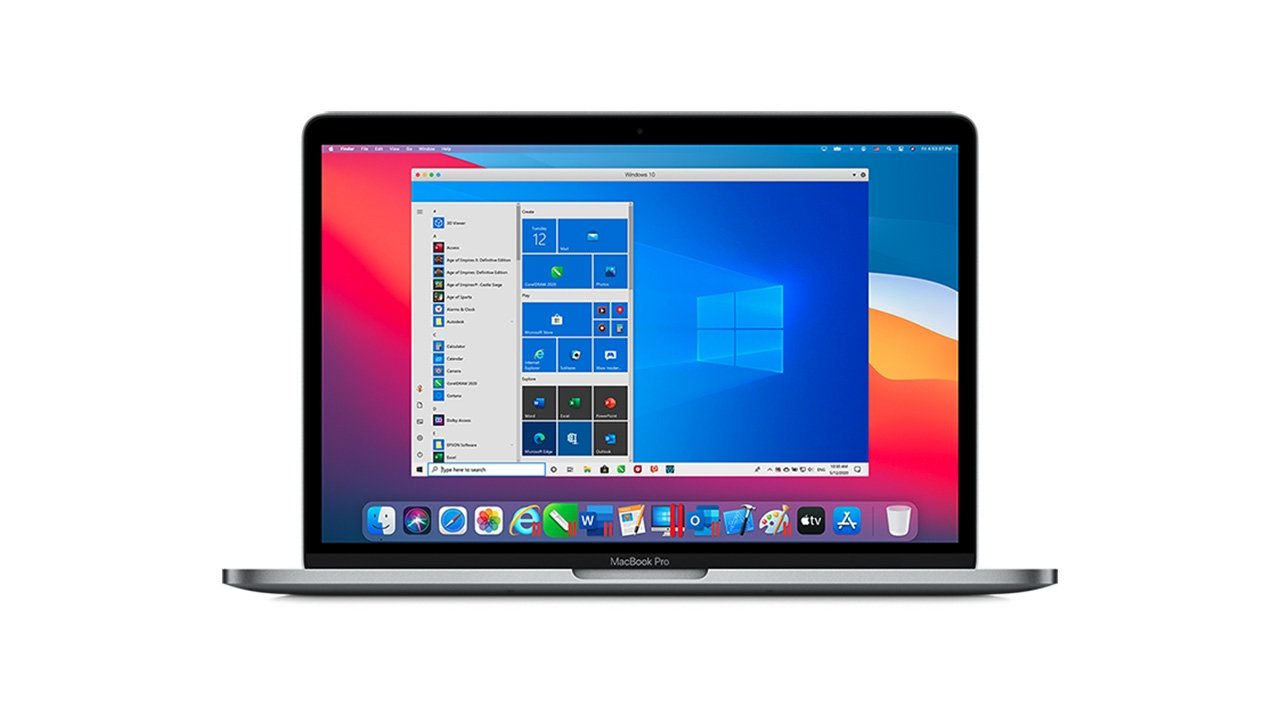Parallels has released version 16.5 of its virtualization software with full native support for Apple's M1 chip.
The company says that Parallels Desktop 16.5 will run much faster and more efficiently on Apple Silicon machines. Parallels says the platform uses up to 250% less energy, sports up to 30% better virtual machine performance for Windows and up to 60% better DirectX 11 performance.
The company says that many of its best features have been reengineered for the M1, including Coherence Mode, Shared Profiles, Touch Bar controls, and Mac keyboard layouts.
There is a caveat — users can only run a virtual machine with an ARM-based operating system. While there are plenty of ARM-based Linux distributions, there currently isn't a retail ARM version of Windows. Instead, users will need to get the Windows 10 ARM Insider preview.
The release of Parallels Desktop 16.5 on Wednesday comes after a testing period in which the company released a pair of Technical Preview versions of the update. Parallels says that 100,000 Mac users tested the previews.
"Apple's M1 chip is a significant breakthrough for Mac users. The transition has been smooth for most Mac applications, thanks to Rosetta technology. However, virtual machines are an exception and thus Parallels engineers implemented native virtualization support for the Mac with M1 chip. This enables our users to enjoy the best Windows-on-Mac experience available," said Parallels SVP Nick Dobrovolskiy.
Parallels Desktop 16.5 is available in a subscription and perpetual license version. A new subscription costs $79.99 per year while a license runs $99.99.
 Mike Peterson
Mike Peterson


 Marko Zivkovic
Marko Zivkovic
 Mike Wuerthele
Mike Wuerthele
 Christine McKee
Christine McKee
 Amber Neely
Amber Neely
 Wesley Hilliard
Wesley Hilliard

 William Gallagher
William Gallagher









52 Comments
Is Windows 10 ARM even useful in any way?
It doesn’t support Windows XP or Windows 2000. It only supports 4 or 5 OSs instead of the 20+ that the intel version does. Is that going to change?
Can it virtualize MacOS Big Sur on a M1? That’s one of the big reasons I run VMs is to isolate parts of my software between work and personal for example.
So let's say I have an M1 Mac with Parallels 16.5 and Windows 10 ARM. Will Windows programs that use the regular Windows 10 for Intel (like Quicken for Windows) work...or do those programs need to be written for Windows for ARM.
This is why I bought a 2020 iMac. I still use many variations of Windows for work. Intel will be with me for a while.
I used an M1 MBA for a day here at the office and the performance just floored me. It made my new 10-Core i9 feel sluggish in some areas.